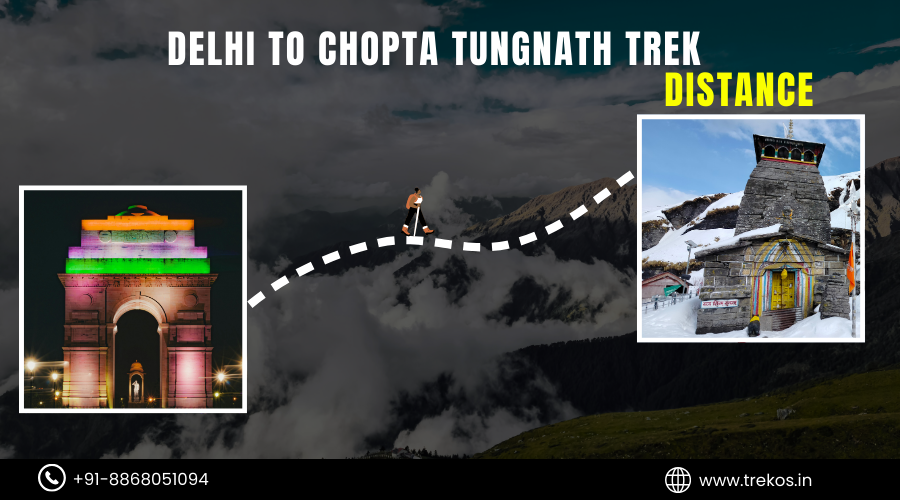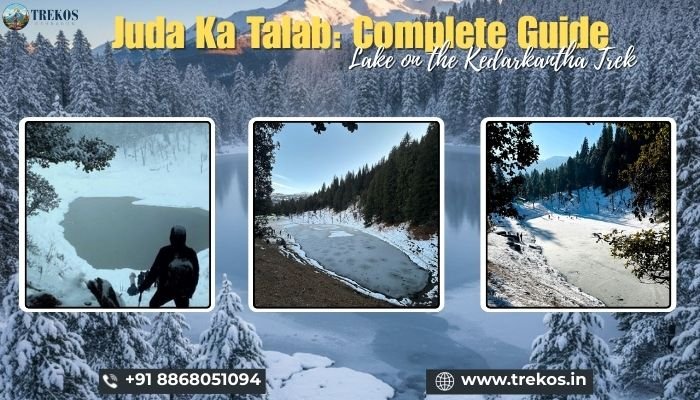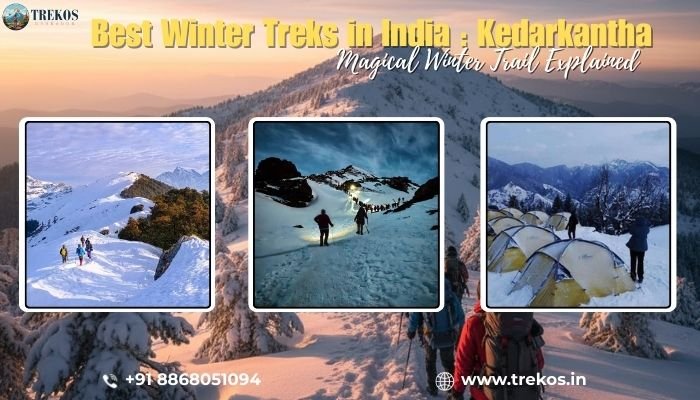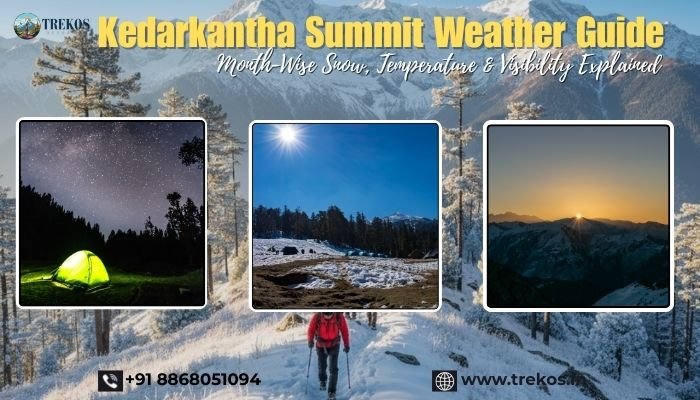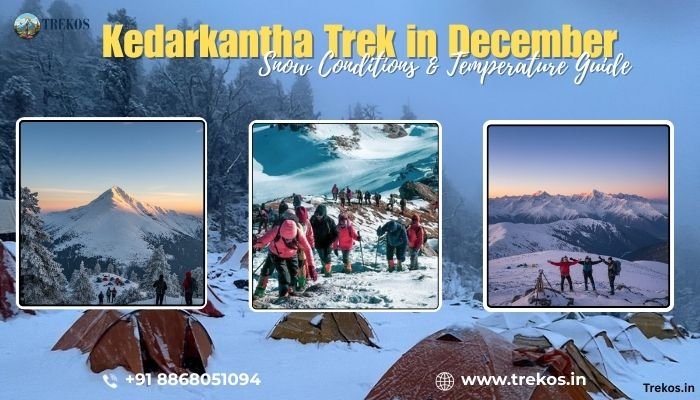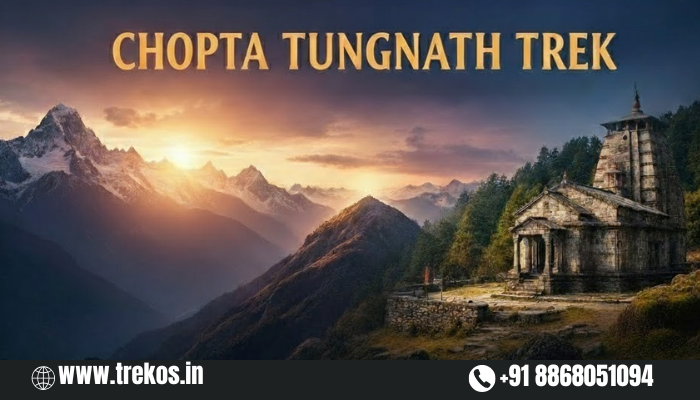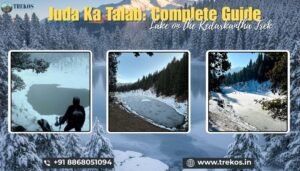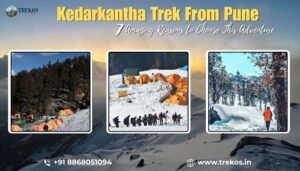ABOUT BEST TIME TO VISIT LAMKHAGA PASS TREK
The Lamkhaga Pass Trek is located in the Himachal Pradesh. It is a high altitude trek that connects the Kullu Valley with the Spiti Valley. This challenging trek offers beautiful views, scenic valleys, snow peak mountains and pristine landscapes and this trek also gives the opportunity to experience the rich cultural diversity of the region. To enjoy the Lamkhaga Pass Trek please ensure safety and also choose the right season for trekking. It starts from Harshil (Uttarakhand). It is located on the Bhagirathi river bank. Harshil village is surrounded by beautiful apple orchards and cedar trees. It is one of the most beautiful places in Garhwal region.
The best time to visit Lamkhaga Pass Trek in summers is (May to June) and in post monsoon is (September to October). During these seasons the weather is comfortably stable with clear skies and moderate temperature.
- Summer (May to June) – Summer is one of the best time to visit Lamkhaga Pass Trek due to its pleasant weather conditions. The months of May and June are considered the best as the snow melts and the landscape is filled with lush and greenery. The daytime temperature is between 10°C to 15°C while at night it is between -5°C to -10°C, offering a cool environment.
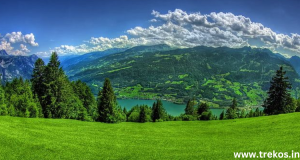
During this period the trek route is not covered by thick snow and that makes it easier for trekkers to find their way. Beautiful views of lush green meadows and sparkling streams.
Additionally the weather is relatively stable, with less chance of heavy rainfall or snow storms, which can be common during the monsoon or winter months. This reduces the risk of trekking through slippery or risky footpaths. The clear skies also provide clear visibility for trekkers to enjoy the beautiful stunning view of the Himalayan peaks and valleys.
- Autumn (September to October) – The month September and October are also considered as the best time to experience the trek. The monsoon rains subside by the end of September, leaving behind clear skies, dry conditions and beautiful transition in the landscape. The temperatures during this season are pleasant, with daytime ranging between 10°C to 15°C and colder nights at around -5°C to 5°C. In the post monsoon autumn season there will be a magical touch to the landscape with stunning views providing trekkers with unrestricted views of the surrounding mountain ranges, including the Dhauladhar and the Pir Panjal ranges. The lower altitude areas are still green. Snowfall may begin at higher altitudes. The crisp air and magnificient mountain views make it a perfect time for photography and enjoying nature.
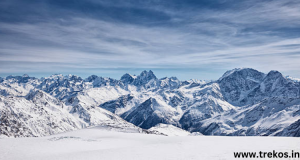
Autumn also offers the advantage of fewer crowds because many trekkers tend to avoid the trail after the monsoon season. This will make for a more peaceful and solitary trekking experience.
IMPORTANT TIPS FOR LAMKHAGA PASS TREK
- Prepare Physically: Build your stamina and strength through regular exercise, including cardio, strength training and practice hikes. Acclimatization is crucial for high altitude treks.
- Carry Proper Gear: Pack essential items such as sturdy trekking boots, warm clothing, a waterproof jacket, a good quality backpack and trekking poles. Always include a first aid kit, headlamp and navigation tools.
CONCLUSION
The best seasons for the Lamkhaga Pass Trek are the summer (May to June) and post autumn (September to October) months. These seasons offer the most favorable weather conditions, with clear skies, moderate temperature and manageable snow levels which allows the trekkers to fully enjoy the trek and experience its beauty. The monsoon season, though lush, is risky due to heavy rainfall, while winter presents extreme conditions that makes the trek challenging and dangerous. By planning your trek during the right season, you can maximize your chances of a safe and enjoyable adventure in one of the most beautiful regions of the Indian Himalayas.
FAQs related to the best time to visit Lamkhaga Pass Trek
- What are the best seasons for the Lamkhaga Pass Trek?
Ans. The best seasons are May to June (pre-monsoon) and September to October (post-monsoon). These periods offer clear skies, stable weather and pleasant temperatures.
- Is winter suitable for the Lamkhaga Pass Trek?
Ans. Winter (November to April) is not ideal due to heavy rainfall, slippery trails and a high risk of landslides in the Himalayan region.
- How can I prepare for weather changes during the trek?
Ans. Pack layers, waterproof clothing and essential gear. Be prepared for sudden temperature drops and snowfall, especially at higher
altitudes.
- Is the Lamkhaga Pass Trek suitable for beginners in these seasons?
Ans. The trek is considered difficult and is better suited for experienced trekkers, even in the best seasons, due to its high altitude and
challenging terrain.
5.What are the benefits of trekking post monsoon?
Ans. Post monsoon (September to October) offers clear skies, vibrant landscapes and minimal snow, making it one of the best times to
experience the trek.


